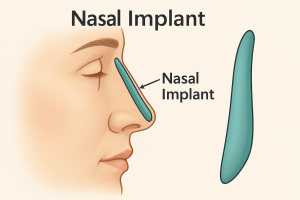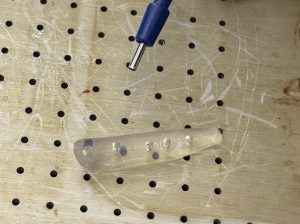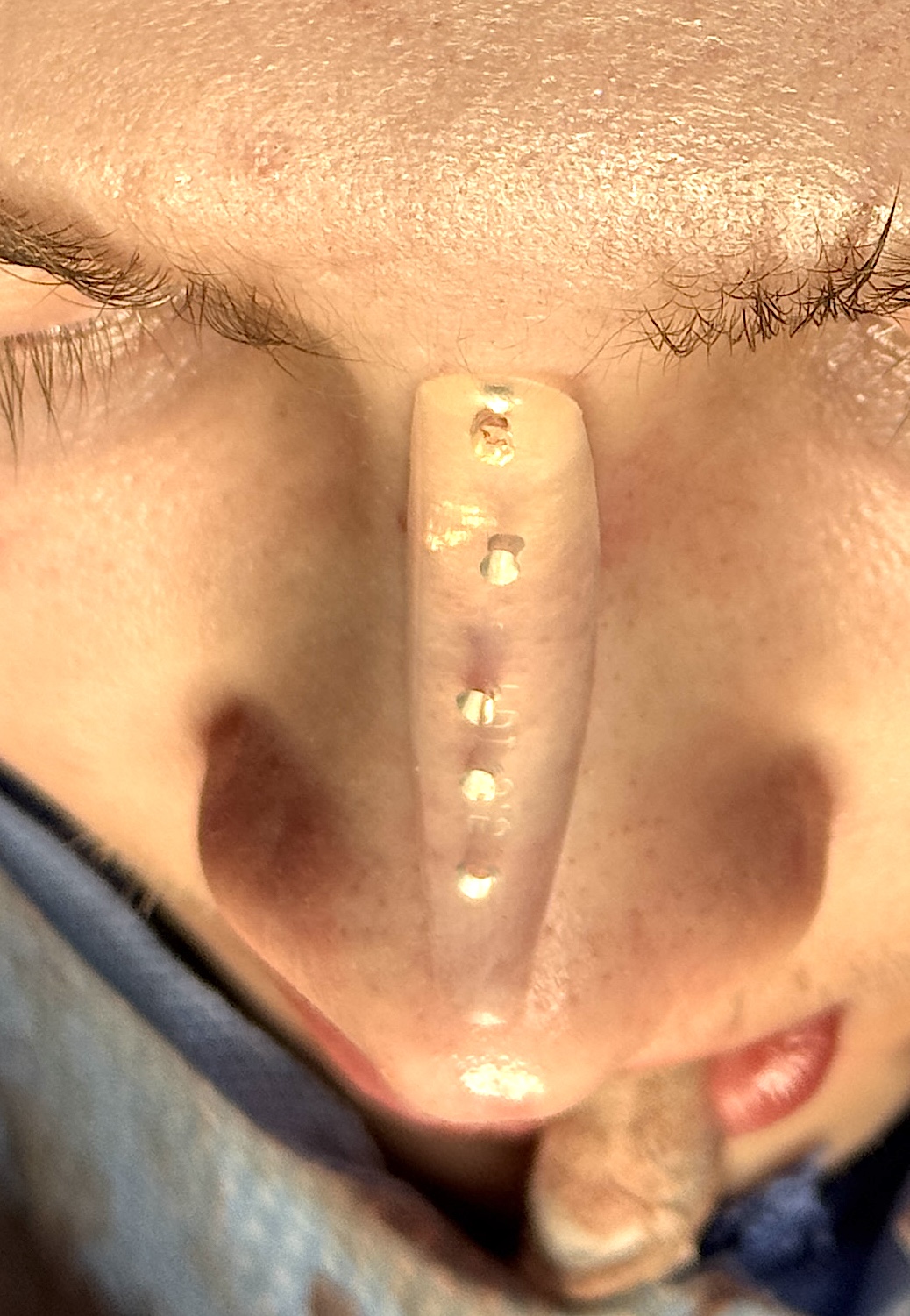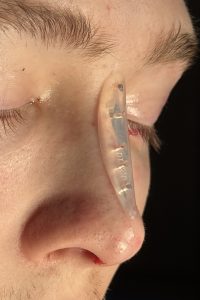Nasal Implant Modification Case Study
Introduction

Three types of alloplastic implants are commonly used for dorsal nasal augmentation:
Types of Nasal Implants
Silicone
- Characteristics: Smooth and easy to insert
- Pros: Predictable shape, easily reversible, lowest infection risk due to smooth surface
- Cons: Higher risk of shifting or asymmetry
ePTFE (Gore-Tex)
- Characteristics: Soft and porous, allowing partial tissue integration
- Pros: Natural feel
- Cons: More difficult to remove; higher infection risk
Medpor (Porous Polyethylene)
- Characteristics: Strong material with tissue integration
- Pros: Very stable
- Cons: Difficult to remove; higher risk of complications if infection occurs
Potential Complications
Complications can occur with any nasal implant and may include:
- Infection
- Shifting or displacement
- Extrusion (implant pushing through the skin)
- Long-term thinning of nasal skin
Choosing the Right Implant
Selecting the most appropriate implant depends on several factors, including the amount of augmentation needed, skin thickness, and—most importantly—the preferences of both the patient and surgeon. Silicone remains the most widely used nasal implant worldwide due to its ease of insertion and removal, its low complication rate, and the wide variety of shapes and styles available, including fully custom options.
However, its smooth surface—which contributes to these advantages—also leads to one of its key disadvantages: a tendency to shift or feel mobile. Even when positioned perfectly in the midline, many patients can still move the upper portion of a silicone implant slightly from side to side. The challenge becomes: how can we overcome this lack of tissue adhesion without compromising silicone’s benefits?
Technical Strategy


Discussion
This simple intraoperative modification allows for rapid tissue ingrowth and improved fixation of a solid silicone nasal implant. The holes are too small to be visible through the skin and do not complicate future removal or exchange if needed. Even at just 2 mm in diameter, tissue ingrowth occurs quickly, as demonstrated in other facial implant applications.
Key Points
- The most commonly used nasal implant is solid silicone.
- Because silicone does not allow tissue adhesion or ingrowth, these implants can shift or feel mobile.
- Creating 2 mm midline holes in a silicone nasal implant promotes tissue ingrowth and enhances implant stability.
Barry Eppley, MD, DMD
World-Renowned Plastic Surgeon




